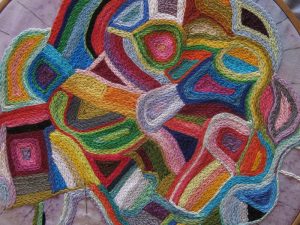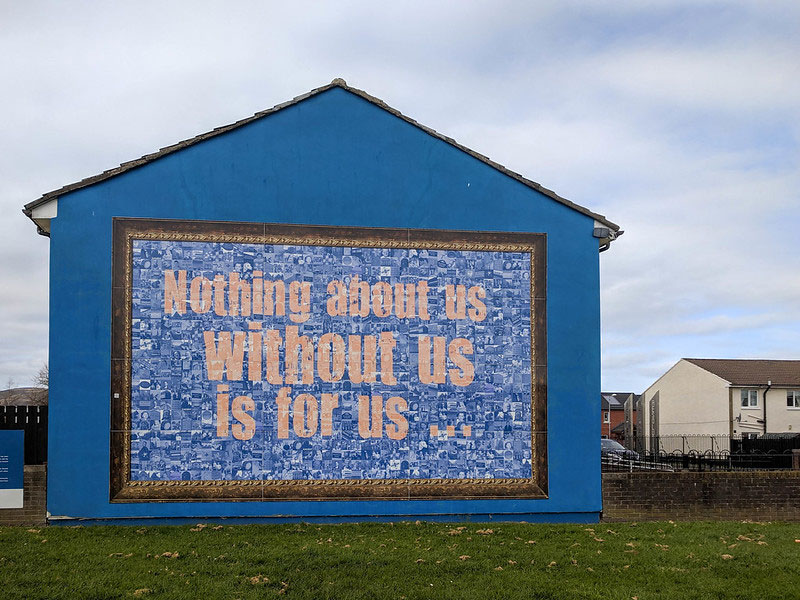Once, when I was sitting with a board of a small, community-based organization, I asked my favorite governance question: to whom were they accountable?
After some uncomfortable shifting, one member said, “To the community we work in.” So I then asked, “What are the accountability mechanisms that ensure what you’re doing–and how you’re doing it—is what the community wants?” After another uneasy moment passed, I added, “For instance, would you consider some community representation on the board?” The man who first answered me flared up, “If I had known that’s where you were going with this, I wouldn’t have answered that way! We’ve tried that—it didn’t work.”
In retrospect, we were both underestimating the need for clarity in the relationship between a nonprofit’s governance system and its community. Some articles in this issue of the Nonprofit Quarterly propose that the accountability and co-involvement built into this relationship should be the central frame of reference, and the hub around which innovation in nonprofit governance should revolve. Not having such a hub to guide us can lead to much spinning of the wheels.
The nonprofit management information I have found most frustrating over the years is the research on boards of directors. With notable exceptions, much of it seemed somewhat irrelevant and circularly self-referential. Boards themselves–even with well-intentioned volunteers–often reflected this stagnation in practice, regularly acting as less than the sum of their parts.
In short, I have come to believe that nonprofits have been focused on getting a proscribed form right instead of experimenting to accurately fit their form to function. As you might imagine, and have probably experienced, this can lead to some fairly lackluster results.
So we take this opportunity to risk having a strong point of view, posing three questions to help expand our understanding of nonprofit governance. First, should nonprofit governance be about the best interests of the community or the institutional interests of the organization? There is often an embedded assumption in the boards I have worked with that the institution is in the best interests of their community—despite the fact that there is no energetic ratification of that from the community. Second, how do we think about what community we are responsible to? In NPQ’s Fall 2002 issue, Judy Miller poses this as an ownership question, with behavioral markers you can use to look at your own board. Third, why is it so hard to get creative in our approaches to governance?
All organizations are set in a larger social context, so we cannot end our reflection at the individual nonprofit level. We and others are raising these questions during a period when our attention is focused on governance from Wall Street to Baghdad. Some believe that public governance is overly affected by corporate interests, and we are now seeing case after case of scandals exposing ethical problems in the governance of corporations that only recently were seen as exemplary. This puts the interests of ordinary and particularly marginalized people at risk. In a democracy, the nonprofit sector is there to ensure that people have a voice in our future—at the community, national and global level. If we accept this as our primary role, it has implications for what should be present as constants in our governance structures.
“Nonprofit boards owe their allegiance first to the community and only second to the organization,” says Kelvin Taketa of the Hawaii Community Foundation. That allegiance must be assured by active engagement of the people the organization touches, bringing them into the loop on the setting of priorities and program design.
Evolution without a sense of our own purpose is likely to leave us directionless and powerless. One thing that makes this sector unique is the passion of the people it involves. It is a place where individuals associate and aspire to create a better world. Sometimes we do our work in bits and pieces, from scratch, and sometimes we do our work through large institutions, but our intention is usually to change something for the public good.
If we do not hold engagement and mobilization as central to nonprofit identity, it may cause us to forget what makes us powerful in society, robbing us of our effectiveness. We defer to models that don’t quite fit what we are meant to do in the world. In fact, we appear to defer to a shadow version of a corporate business governance model. While corporate governance has much to teach us (about what not to do as well as what can be done), it misses the point of our work. It does not guard or nurture our greatest asset and comparative advantage: the energy of motivated and engaged volunteers and community members.
For Mark Lindberg of the Otto Bremer Foundation in Minnesota, the involvement of those for whom the organization exists is an issue of human rights. “From a human-rights perspective,” he says, “programs that don’t involve and engage people in their design and implementation aren’t really set up to enable people to claim their own futures.”
Indeed, for others around the world, participatory governance and active democracy are not only seen as linked practices but as essential to the full achievement of human rights. They speak to the right of self-determination and equity in societies where some or all voices have been excluded from policy-making.
In a recent report to the U.N. Commission on Human Rights, the Catholic advocacy association Pax Romana and the UNESCO Center of Catalonia noted, “The essence of self-determination has always been related to the promotion of democracy and good governance. No effective promotion of democracy is possible without effective participation … This entails the right of people individually and collectively to decide on their form of government/governance, and to participate effectively in decision-making at all levels. In essence it means that individuals and groups should be in control of their own destinies. Their institutions should be devised accordingly.”
Are nonprofit institutions acting in ways that respect–and are open to the intellect and creativity of—the people they are established to benefit? If not, what are we inadvertently putting at risk? Have we made ourselves party to a larger problem of democratic deficit in this country by too often squatting ineffectually in the place needed for revival?
Some contributors to this issue believe that nonprofits, by not actively engaging their communities, have put their day-to-day legitimacy at risk, along with a good deal of their capacity to influence larger systems. This is unwise at the very least—a squandering of legacy and protective support that good stewardship should guard against.
A fascinating document entitled Principles of Governance in the 21st Century, produced by the Charles Leopold Mayer Foundation, asserts that it is the “duty of people in governance positions to act pertinently,” respecting the complexity and interconnectedness of issues and systems around them. This requires research, and the ability to think and work on a number of different scales at the same time.
Sign up for our free newsletters
Subscribe to NPQ's newsletters to have our top stories delivered directly to your inbox.
By signing up, you agree to our privacy policy and terms of use, and to receive messages from NPQ and our partners.
The world is simultaneously getting smaller and more complex, as is demonstrated by the coalescence of Aideen McGinley’s and Gus Newport’s approaches—an ocean apart. Boards must see themselves as intimately connected to the aspirations and interests of their community, and do so with the ability to inform and develop those interests to meet current conditions.
Gus Newport demonstrates (in “Why Are We Replacing Furniture When Half the Neighborhood is Missing?”) how this concept was carried out in an inner-city community. Residents of the Dudley Street community in Boston were engaged in a research/action loop organized by the central question “What is of importance to us?” The dialogue it produced stood outside of the narrower categorical interests of nonprofit organizations in the neighborhood, but eventually incorporated them in larger strategies developed to improve the neighborhood.
The fragmentation that is endemic to the world of nonprofits is often off-putting to the people whom organizations need to engage for their energy and ideas, but this can be overcome—as in the case described in McGinley’s article “Making Hope and History Rhyme.”
“The context and the place are interconnected,” she says. “Society itself, with its rich tapestry of diverse stakeholders, deserves to be treated as the whole and intricate system it is, as do the people who inhabit the system.”
As the Principles of Governance document states, it is time to “design modes of governance that are capable of dealing with relations between different fields of activity, between social agents…” Boards must see themselves as responsible for ensuring that the interconnections between social forces and communities are explored and understood and the strategies taken on by the organization are related to this understanding. It is also time for board members to be active in developing and joining coalitions that bridge divisions between issues and communities. This principle was explored in the Summer 2002 edition of the Quarterly, in an article by John Powell, who promoted a re-examination of various systems to address the integrated needs of a neighborhood.
John Carver actually speaks to this in one of his better but more underutilized principles of good governance. He urges boards to be attentive to “horizontal integration,” looking for the opportunities to merge our work with that of others who function in the same field of practice–or locality. This would appear to be absolutely central to any serious stewardship intention when our charge is to function for the public good. But such co-setting of agendas is something that seldom makes its way into a central place in the psyches of our boards. How often have you seen neighborhood organizations hold joint board meetings that consider the best interests of the whole neighborhood?
For a few years now, researchers and practitioners in governance have been conceding that there is no one right way to structure a nonprofit board. We agree with this, but assert that there is a central set of principles that should guide our designs, and these are embedded in the civic purpose of this sector, and relate to participation of—and accountability to—community, as well as rigor and integration.
As Bill Ryan, Judith Saidel and Marla Bobowick observe in their article that frames the case studies developed as part of the BoardSource Governance Futures project, inertia may be carrying the day when it comes to experimenting with the basic nonprofit governance model. This may not be a surprise if we have become seriously estranged from our central purposes and the principles of practice that should flow from that.
Pat Bradshaw of the Schulich School of Business at York University in Toronto provides additional insight as to why experimentation might be difficult: “Models of governance are, in my opinion, ways of holding the power structures of the organization in place and, once you change them, you start to call into question all of your power relationships. This may be a very good thing, but it creates some degree of temporary imbalance between board and staff, between organization and community, between organizations and foundations, and between organizations and board members themselves. Change disrupts the stability of patterns that have become entrenched. The instability often results in groups defending their interests.”
My personal favorite among the case studies from the BoardSource Governance Futures project, which we print first here in the pages of NPQ, is the response of a women’s hospital that was subsumed in a forced merger with a larger healthcare institution. Their stock in trade was their ability to stay current with the progress of research and practice in women’s health worldwide, so they integrated this function within their governance structure. They developed what they call the “Blue Sky Committee,” which uses the extraordinary talents of passionate board members to stay engaged with a worldwide community of researchers and practitioners. This allows the group to seek out all the possibilities on the large horizon that might translate to programs locally. It also keeps the group in an excited creation mode.
We may need the same thing in the area of governance. How about a blue sky committee that will help us focus on what is truly important and what is possible as a next stage of evolution for nonprofit boards and nonprofit governance?
We have posed a core concern here about stewardship in the area of our accountability to and engagement of constituents. We linked this to associated concerns about what we see as a lack of rigor and integrated practice on interconnected issues. These are core issues of governance in a sector that is organized around public benefit and association, and in a sector that needs to use every precious resource very wisely.
All of these issues are explored in the articles that follow. We think that you will find the reflections thought-provoking.
We invite you to talk back to the editors and authors about the concepts that they float. Tell us your ideas and experiences, and reveal your wildest hopes and dreams about how we might govern ourselves with greater energy, effectiveness and overall influence as time goes on. The blue sky is the limit!
Ruth McCambridge is the editor-in-chief of the Nonprofit Quarterly.













